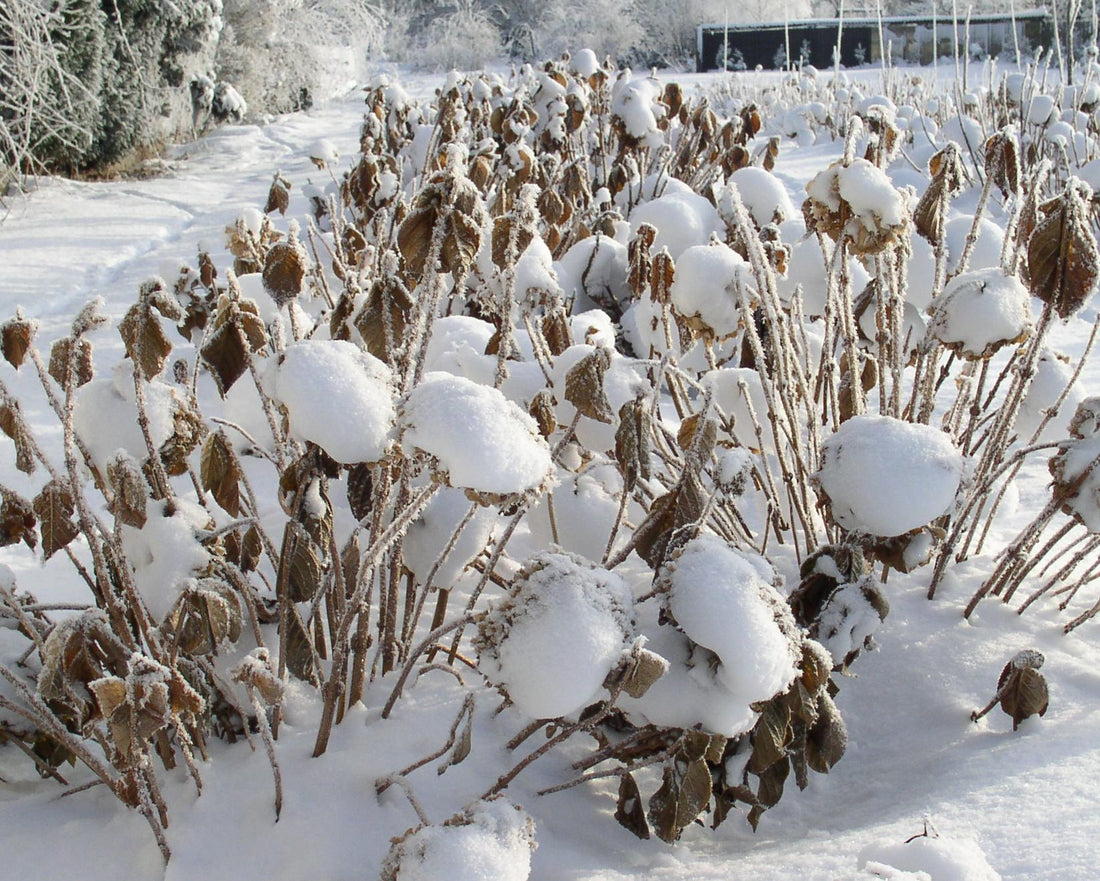Overwintering hydrangeas
Hydrangeas (Hydrangea macrophylla) planted outdoors
Hydrangea macrophylla must be protected from frost during the growing season when they are not in dormancy (from approximately March to October) - that is, as soon as or as long as green buds or green leaves are visible.
Since the hydrangea forms its flower buds for the following year already in autumn (July to October), these flower buds should be protected.
In exposed locations with bare frost, strong temperature fluctuations, and a lot of winter sun (constant thawing and freezing), many buds die. Therefore, a sheltered, shady location is always ideal.
Overwintering hydrangeas in the basement
Hydrangeas can overwinter in the basement at temperatures between +2°C and +10°C without any additional protection. On the contrary: Ensure sufficient air circulation to prevent the buds from rotting. Watch for botrytis infestation and keep the root ball slightly moist.
As soon as the hydrangea sprouts again, a bright, cool location is important.
Overwintering hydrangeas in pots
Potted hydrangeas—for example, on a balcony or terrace—should only be overwintered in a very sheltered, shady spot with plenty of winter protection. Don't forget to wrap the pot well, too.
Further treatment is carried out as for hydrangeas planted outdoors.
Winter protection is possible in many ways
The root collar above the ground should be mounded or covered with garden soil, compost, bark mulch or peat to a height of 10-20 cm in good time in autumn.
To protect the shoots, you can:
- brushwood
- dry leaf litter
- straw
- Jute mats (possibly in a wire mesh)
The winter protection should always be able to breathe. Never use foil, bubble wrap, or other airtight materials—these will lead to a "sweating environment" and cause the buds to rot.
Late frosts – a major danger
Most often, the well-overwintered buds do not die in winter, but after the first signs of spring - that is, between February and the Ice Saints in May.
Often, all that remains is a green shrub with few flowers. Therefore, the winter protection should not be removed too early.
If the cover has already been removed, carefully monitor the weather forecast and consider putting a blanket over it again if cold snaps are forecast.
Plants that sprout late in the spring due to cool, shady winter protection cannot freeze even in late frosts!
Panicle hydrangeas (Hydrangea paniculata)
Species like panicle hydrangeas require no winter protection, as they bloom on one-year-old wood. They can also be safely pruned in spring.

